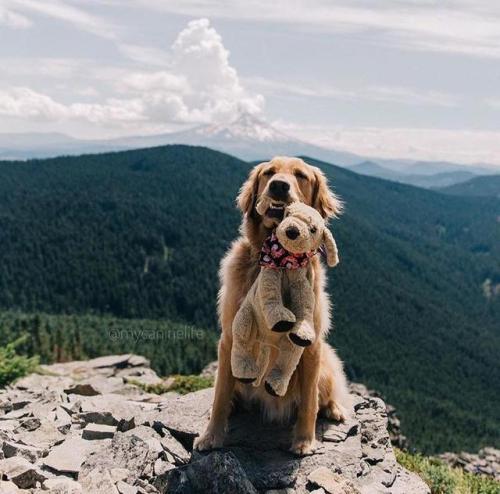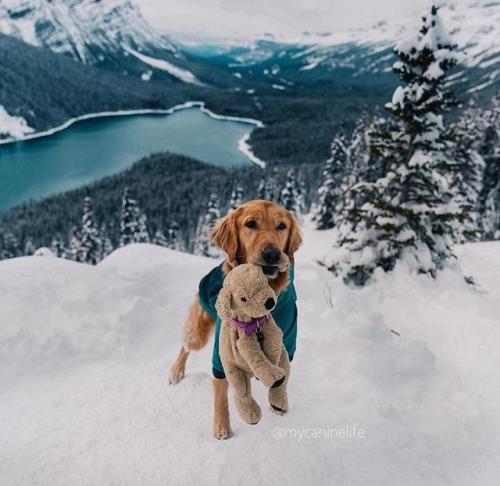‘’A God’s Eye View Of The Universe’‘









‘’A God’s Eye View of the Universe’‘
Credit: SpaceRip
More Posts from Ocrim1967 and Others









(Source)
5 New Competitions for the Artemis Generation!
A common question we get is, “How can I work with NASA?”
The good news is—just in time for the back-to-school season—we have a slew of newly announced opportunities for citizen scientists and researchers in the academic community to take a shot at winning our prize competitions.
As we plan to land humans on the Moon by 2024 with our upcoming Artemis missions, we are urging students and universities to get involved and offer solutions to the challenges facing our path to the Moon and Mars. Here are five NASA competitions and contests waiting for your ideas on everything from innovative ways to drill for water on other planets to naming our next rover:
1. The BIG Idea Challenge: Studying Dark Regions on the Moon
Before astronauts step on the Moon again, we will study its surface to prepare for landing, living and exploring there. Although it is Earth’s closest neighbor, there is still much to learn about the Moon, particularly in the permanently shadowed regions in and near the polar regions.

Through the annual Breakthrough, Innovative and Game-changing (BIG) Idea Challenge, we’re asking undergraduate and graduate student teams to submit proposals for sample lunar payloads that can demonstrate technology systems needed to explore areas of the Moon that never see the light of day. Teams of up to 20 students and their faculty advisors are invited to propose unique solutions in response to one of the following areas:
• Exploration of permanently shadowed regions in lunar polar regions • Technologies to support in-situ resource utilization in these regions • Capabilities to explore and operate in permanently shadowed regions
Interested teams are encouraged to submit a Notice of Intent by September 27 in order to ensure an adequate number of reviewers and to be invited to participate in a Q&A session with the judges prior to the proposal deadline. Proposal and video submission are due by January 16, 2020.
2. RASC-AL 2020: New Concepts for the Moon and Mars
Although boots on the lunar surface by 2024 is step one in expanding our presence beyond low-Earth orbit, we’re also readying our science, technology and human exploration missions for a future on Mars.
The 2020 Revolutionary Aerospace Systems Concepts – Academic Linkage (RASC-AL) Competition is calling on undergraduate and graduate teams to develop new concepts that leverage innovations for both our Artemis program and future human missions to the Red Planet. This year’s competition branches beyond science and engineering with a theme dedicated to economic analysis of commercial opportunities in deep space.

Competition themes range from expanding on how we use current and future assets in cislunar space to designing systems and architectures for exploring the Moon and Mars. We’re seeking proposals that demonstrate originality and creativity in the areas of engineering and analysis and must address one of the five following themes: a south pole multi-purpose rover, the International Space Station as a Mars mission analog, short surface stay Mars mission, commercial cislunar space development and autonomous utilization and maintenance on the Gateway or Mars-class transportation.
The RASC-AL challenge is open to undergraduate and graduate students majoring in science, technology, engineering, or mathematics at an accredited U.S.-based university. Submissions are due by March 5, 2020 and must include a two-minute video and a detailed seven to nine-page proposal that presents novel and robust applications that address one of the themes and support expanding humanity’s ability to thrive beyond Earth.
3. The Space Robotics Challenge for Autonomous Rovers
Autonomous robots will help future astronauts during long-duration missions to other worlds by performing tedious, repetitive and even strenuous tasks. These robotic helpers will let crews focus on the more meticulous areas of exploring. To help achieve this, our Centennial Challenges initiative, along with Space Center Houston of Texas, opened the second phase of the Space Robotics Challenge. This virtual challenge aims to advance autonomous robotic operations for missions on the surface of distant planets or moons.

This new phase invites competitors 18 and older from the public, industry and academia to develop code for a team of virtual robots that will support a simulated in-situ resource utilization mission—meaning gathering and using materials found locally—on the Moon.
The deadline to submit registration forms is December 20.
4. Moon to Mars Ice & Prospecting Challenge to Design Hardware, Practice Drilling for Water on the Moon and Mars
A key ingredient for our human explorers staying anywhere other than Earth is water. One of the most crucial near-term plans for deep space exploration includes finding and using water to support a sustained presence on our nearest neighbor and on Mars.
To access and extract that water, NASA needs new technologies to mine through various layers of lunar and Martian dirt and into ice deposits we believe are buried beneath the surface. A special edition of the RASC-AL competition, the Moon to Mars Ice and Prospecting Challenge, seeks to advance critical capabilities needed on the surface of the Moon and Mars. The competition, now in its fourth iteration, asks eligible undergraduate and graduate student teams to design and build hardware that can identify, map and drill through a variety of subsurface layers, then extract water from an ice block in a simulated off-world test bed.
Interested teams are asked to submit a project plan detailing their proposed concept’s design and operations by November 14. Up to 10 teams will be selected and receive a development stipend. Over the course of six months teams will build and test their systems in preparation for a head-to-head competition at our Langley Research Center in June 2020.
5. Name the Mars 2020 Rover!
Red rover, red rover, send a name for Mars 2020 right over! We’re recruiting help from K-12 students nationwide to find a name for our next Mars rover mission.
The Mars 2020 rover is a 2,300-pound robotic scientist that will search for signs of past microbial life, characterize the planet’s climate and geology, collect samples for future return to Earth, and pave the way for human exploration of the Red Planet.
K-12 students in U.S. public, private and home schools can enter the Mars 2020 Name the Rover essay contest. One grand prize winner will name the rover and be invited to see the spacecraft launch in July 2020 from Cape Canaveral Air Force Station in Florida. To enter the contest, students must submit by November 1 their proposed rover name and a short essay, no more than 150 words, explaining why their proposed name should be chosen.
Just as the Apollo program inspired innovation in the 1960s and ‘70s, our push to the Moon and Mars is inspiring students—the Artemis generation—to solve the challenges for the next era of space exploration.
For more information on all of our open prizes and challenges, visit: https://www.nasa.gov/solve/explore_opportunities
Make sure to follow us on Tumblr for your regular dose of space: http://nasa.tumblr.com





Read Full Article Here: 6 Tricks to Staying Positive - Psych2Go
Follow @psych2go for more










Your Gut in Space
Finding the Right Balance for the Microbiota
Trillions of microorganisms live on and in the human body, many of them essential to its function and health. These organisms, collectively known as the microbiota, outnumber cells in the body by at least five times.

Microorganisms in the intestinal tract, the gut microbiota, play an especially important role in human health. An investigation on the International Space Station, Rodent Research-7 (RR-7), studies how the gut microbiota changes in response to spaceflight, and how that change in turn affects the immune system, metabolic system, and circadian or daily rhythms.

Research shows that the microbiota in the mammalian digestive tract has a major impact on an individual’s physiology and behavior. In humans, disruption of microbial communities has been linked to multiple health problems affecting intestinal, immune, mental and metabolic systems.

The investigation compares two different genetic strains of mice and two different durations of spaceflight. Twenty mice, ten of each strain, launch to the space station, and another 20 remain on the ground in identical conditions (except, of course, for the absence of gravity). Mice are a model organism that often serves as a scientific stand-in for other mammals and humans.

Fecal material collected from the mice every two weeks will be examined for changes in the gut microbiota. Researchers plan to analyze fecal and tissue samples after 30 and 90 days of flight to compare the effects of different durations of time in space.

With a better understanding of relationships between changes such as disruption in sleep and an imbalance of microbial populations, researchers can identify specific factors that contribute to changes in the microbiota. Further studies then can determine proactive measures and countermeasures to protect astronaut health during long-term missions.

Make sure to follow us on Tumblr for your regular dose of space: http://nasa.tumblr.com.










How Quantum Physics Allows Us To See Back Through Space And Time
"If it weren’t for this rare transition, from higher energy spherical orbitals to lower energy spherical orbitals, our Universe would look incredibly different in detail. We would have different numbers and magnitudes of acoustic peaks in the cosmic microwave background, and hence a different set of seed fluctuations for our Universe to build its large-scale structure out of. The ionization history of our Universe would be different; it would take longer for the first stars to form; and the light from the leftover glow of the Big Bang would only take us back to 790,000 years after the Big Bang, rather than the 380,000 years we get today.
In a very real sense, there are a myriad of ways that our view into the distant Universe — to the farthest reaches of deep space where we detect the earliest signals arising after the Big Bang — that would be fundamentally less powerful if not for this one quantum mechanical transition. If we want to understand how the Universe came to be the way it is today, even on cosmic scales, it’s remarkable how subtly dependent the outcomes are on the subatomic rules of quantum physics. Without it, the sights we see looking back across space and time would be far less rich and spectacular."
What gives the Universe the properties we see today? Is it gravity, working on the largest of cosmic scales? It plays a role, but perhaps ironically, the subatomic physics that governs electron transitions within atoms is maybe even more important.
This is how quantum physics allows us to see as far out in space and as far back in time as we can. Without it, our Universe would be a very different place.

Earth as viewed from 10,000 miles. In 1969, the Apollo 4 unmanned test flight made a great ellipse around Earth as a test of the translunar motors and of the high speed entry required of a manned flight returning from the moon. A 70mm camera was programmed to look out a window toward Earth, and take a series of photographs from “high apogee”. Coastal Brazil, Atlantic Ocean, West Africa, Antarctica, looking west. This photograph was made when the Apollo 4 spacecraft, still attached to the S-IVB (third) stage, was orbiting Earth at an altitude of 9,544 miles. source










He faced all this for you, for you to be loved, blessed, glorified, exalted, satisfied, accepted, freed and resurrected.
The Smoke From a (Not-so) Distant Fire
Flying directly through thick plumes of smoke may seem more harrowing than exciting. But for members of the CAMP2Ex science team, the chance to fly a P-3 Orion straight through clouds of smoke billowing off fires from Borneo this week was too good an opportunity to pass up.

CAMP2Ex stands for the Cloud, Aerosol and Monsoon Processes in the Philippines Experiment. The 2, by the way, is silent.

It’s a field campaign based out of Clark in the Philippines, flying our P-3, a Learjet and collaborating with researchers on the research vessel Sally Ride to understand how tiny particles in the atmosphere affect cloud formations and monsoon season.

The tiny aerosol particles we’re looking at don’t just come from smoke. Aerosol particles also come from pollution, billowing dust and sea salt from the ocean. They can have an outsized effect on weather and climate, seeding clouds that bring rain and altering how the atmosphere absorbs the Sun’s heat.

The smoke we were flying Monday came from peat fires, burning through the soil. That’s pretty unusual — the last time Borneo had these kind of fires was in 2015, so it was a rare opportunity to sample the chemistry of the smoke and find out what’s mixing with the air.

The planes are loaded with instruments to learn more about aerosol particles and the makeup of clouds, like this high-speed camera that captures images of the particles in flight.

One instrument on the plane collects droplets of cloud water as the plane flies through them, and on the ground, we test how acidic and what kind of particles form the cloud drops.

All of these measurements are tools in improving our understanding of the interaction between particles in the air and clouds, rainfall and precipitation in the Pacific Ocean.

Learn more about the CAMP2Ex field campaign, here!
Make sure to follow us on Tumblr for your regular dose of space: http://nasa.tumblr.com
The Shrinking Aral Sea
The Aral Sea was once the fourth-largest lake in the world. Fed primarily by snowmelt and precipitation flowing down from faraway mountains, it was a temperate oasis in an arid region. But in the 1960s, the Soviet Union diverted two major rivers to irrigate farmland, cutting off the inland sea from its source. As the Aral Sea dried up, fisheries collapsed, as did the communities that depended on them. The remaining water supply became increasingly salty and polluted with runoff from agricultural plots. Loss of the Aral Sea’s water influenced regional climate, making the winters even colder and the summers much hotter.

While seasonal rains still bring water to the Aral Sea, the lake is roughly one-tenth of its original size. These satellite images show how the Aral Sea and its surrounding landscape has changed over the past few decades.
For more details about these images, read the full stories here: https://go.nasa.gov/2PqJ1ot
Make sure to follow us on Tumblr for your regular dose of space: http://nasa.tumblr.com
-
 x3ph0s reblogged this · 2 years ago
x3ph0s reblogged this · 2 years ago -
 floyd-le liked this · 2 years ago
floyd-le liked this · 2 years ago -
 detroitlib liked this · 3 years ago
detroitlib liked this · 3 years ago -
 longshankstumblarian reblogged this · 3 years ago
longshankstumblarian reblogged this · 3 years ago -
 longshankstumblarian liked this · 3 years ago
longshankstumblarian liked this · 3 years ago -
 lemur4444 liked this · 4 years ago
lemur4444 liked this · 4 years ago -
 fanastic-next reblogged this · 5 years ago
fanastic-next reblogged this · 5 years ago -
 kamiderre reblogged this · 5 years ago
kamiderre reblogged this · 5 years ago -
 brieflyinstantruins liked this · 5 years ago
brieflyinstantruins liked this · 5 years ago -
 trixclibrarian reblogged this · 5 years ago
trixclibrarian reblogged this · 5 years ago -
 trixclibrarian liked this · 5 years ago
trixclibrarian liked this · 5 years ago -
 iraela-celestial-dawn liked this · 5 years ago
iraela-celestial-dawn liked this · 5 years ago -
 cosmicary reblogged this · 5 years ago
cosmicary reblogged this · 5 years ago -
 urieelar liked this · 6 years ago
urieelar liked this · 6 years ago -
 farabello reblogged this · 6 years ago
farabello reblogged this · 6 years ago -
 skupidaki liked this · 6 years ago
skupidaki liked this · 6 years ago -
 nxvemberr liked this · 6 years ago
nxvemberr liked this · 6 years ago -
 itsokmoon reblogged this · 6 years ago
itsokmoon reblogged this · 6 years ago -
 bloomingfreely liked this · 6 years ago
bloomingfreely liked this · 6 years ago -
 narimanpoint reblogged this · 6 years ago
narimanpoint reblogged this · 6 years ago -
 sarcasticspoon reblogged this · 6 years ago
sarcasticspoon reblogged this · 6 years ago -
 sarcasticspoon liked this · 6 years ago
sarcasticspoon liked this · 6 years ago -
 xshelly reblogged this · 6 years ago
xshelly reblogged this · 6 years ago -
 jellyjar00 liked this · 6 years ago
jellyjar00 liked this · 6 years ago -
 freedomiswaytotruth liked this · 6 years ago
freedomiswaytotruth liked this · 6 years ago -
 lovebridgelifetocreator reblogged this · 6 years ago
lovebridgelifetocreator reblogged this · 6 years ago -
 smokethroughgrittedteeth reblogged this · 6 years ago
smokethroughgrittedteeth reblogged this · 6 years ago -
 house--of--teeth reblogged this · 6 years ago
house--of--teeth reblogged this · 6 years ago -
 britoisa07-blog liked this · 6 years ago
britoisa07-blog liked this · 6 years ago -
 gnoxus reblogged this · 6 years ago
gnoxus reblogged this · 6 years ago -
 theblithewitchproject liked this · 6 years ago
theblithewitchproject liked this · 6 years ago -
 altitxde7 liked this · 6 years ago
altitxde7 liked this · 6 years ago -
 ytelovski reblogged this · 6 years ago
ytelovski reblogged this · 6 years ago -
 ytelovski liked this · 6 years ago
ytelovski liked this · 6 years ago -
 photo-fantasy-universe reblogged this · 6 years ago
photo-fantasy-universe reblogged this · 6 years ago -
 cosmic-prism reblogged this · 6 years ago
cosmic-prism reblogged this · 6 years ago -
 mattheavygirl reblogged this · 6 years ago
mattheavygirl reblogged this · 6 years ago -
 mattheavygirl liked this · 6 years ago
mattheavygirl liked this · 6 years ago -
 grapesz1 liked this · 6 years ago
grapesz1 liked this · 6 years ago -
 bugboyparker liked this · 7 years ago
bugboyparker liked this · 7 years ago -
 issadubbra liked this · 7 years ago
issadubbra liked this · 7 years ago -
 buddhalov reblogged this · 7 years ago
buddhalov reblogged this · 7 years ago -
 buddhalov liked this · 7 years ago
buddhalov liked this · 7 years ago